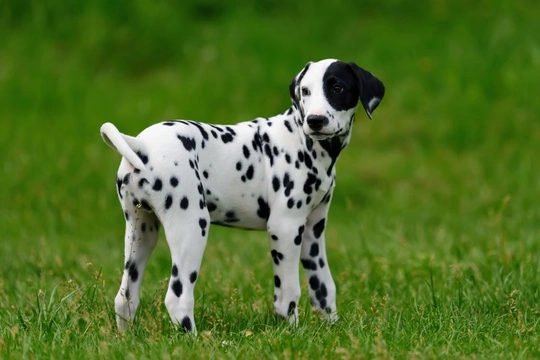
Five interesting facts about Dalmatians
The Dalmatian is one of the most instantly recognisable of all dog breeds, with their proportionate, well-balanced builds and of course, very obvious black and white spots! The outgoing personality and fun-loving temperament of the breed is also strongly tied to their identity, and Dalmatians remain a popular choice of dog breed in the UK today, even though they are not among the most common dog types you will see out in the average dog park.
However, Dalmatians can also be rather hard to manage for those who are not used to the breed or experienced with dogs, as they have short attention spans, high energy levels and a hearty dose of mischief thrown in too, sometimes paired with not a lot of common sense!
Whether you own a Dalmatian, are considering buying one or simply like to admire them from afar, this article will share five interesting facts about the Dalmatian breed and their history, which helps to give an insight into their personalities and core traits. Read on to learn more.
Dalmatians aren’t born with spots
The distinctive black spots on a white background are of course what most of us call to mind when we think about the Dalmatian dog breed – but Dalmatians aren’t actually born with their spots! Dalmatian puppies are pure white when born, and only begin to develop their signature black spots when they are three to four months old.
Over the course of the following month, they will develop most of the spots that they will display when fully grown – but they may still develop new additional spots slowly and occasionally throughout the rest of their lives too!
The spots range in size from around 3-6cm, and should be round or nearly-round, mainly with clear boundaries between spots to meet the breed standard’s ideal.
A significant percentage of dogs of the breed are deaf or partially deaf
One of the less positive breed traits that the Dalmatian possesses is a higher than normal propensity to full or partial deafness, and this trait is actually connected to their coat colour and spotted patterning. This is because the same gene that causes the spotted coat appearance is also associated with hearing problems, and causes a lack of melanin-producing cells within the ear, which are necessary for normal ear development and functionality.
Between 15-30% of the total Dalmatian population are partially deaf or suffer from hearing loss to some extent in one ear or the other – or full deafness in one ear and normal hearing in the other. Around 5% of all dogs of the breed suffer from deafness or partial deafness in both ears.
The film 101 Dalmatians wasn’t actually that good for the breed
Dalmatians first entered the public consciousness in a big way when the original “101 Dalmatians” film was released in 1961, and underwent a resurgence when a remake was released a couple of decades later in 1996.
The popularity of both films quickly turned the Dalmatian breed into a highly popular one that lots of people wanted to own, leading to heightened demand for Dalmatian puppies for sale. However, the uptick in popularity of Dalmatians and so, increased number of dogs of the breed bred to meet demand backfired in a lot of ways, as people took on Dalmatians as pets without really understanding the core needs of the breed, how to care for them, and the responsibility that goes with dog ownership.
This in turn led to significant numbers of Dalmatians being surrendered and abandoned in the couple of years following each film, as new owners began to realise that the Dalmatian is not one of the easiest or low-maintenance breeds to own.
Dalmatians are one of the oldest recognised dog breeds
Nobody is really sure where dogs of the breed that we call Dalmatians today originated from, and several different theories exist to attempt to explain their history. However, what we do know is that dogs that look very similar to today’s Dalmatians are shown in Egyptian tomb paintings, and that the official breed standard and recognition of the breed in the western world was already in place by the late 19th century.
They used to be popular in certain now-defunct working roles before they became pets
The Dalmatian dog breed was hugely popular in the Regency Era in the early 19th century, where they were widely used as carriage dogs, or dogs that were used to accompany horse drawn carriages about their business.
Dalmatians were seen as status symbols, and those with the most distinctive marks and most visually impressive looks were in high demand!
Dalmatians have also worked as firehouse mascots and to accompany horse drawn fire trucks, running in front of the trucks and alerting those in the road that a fire truck was coming and so, clearing the way for the horses to pass through. They also helped to guard fire truck horses from theft!



